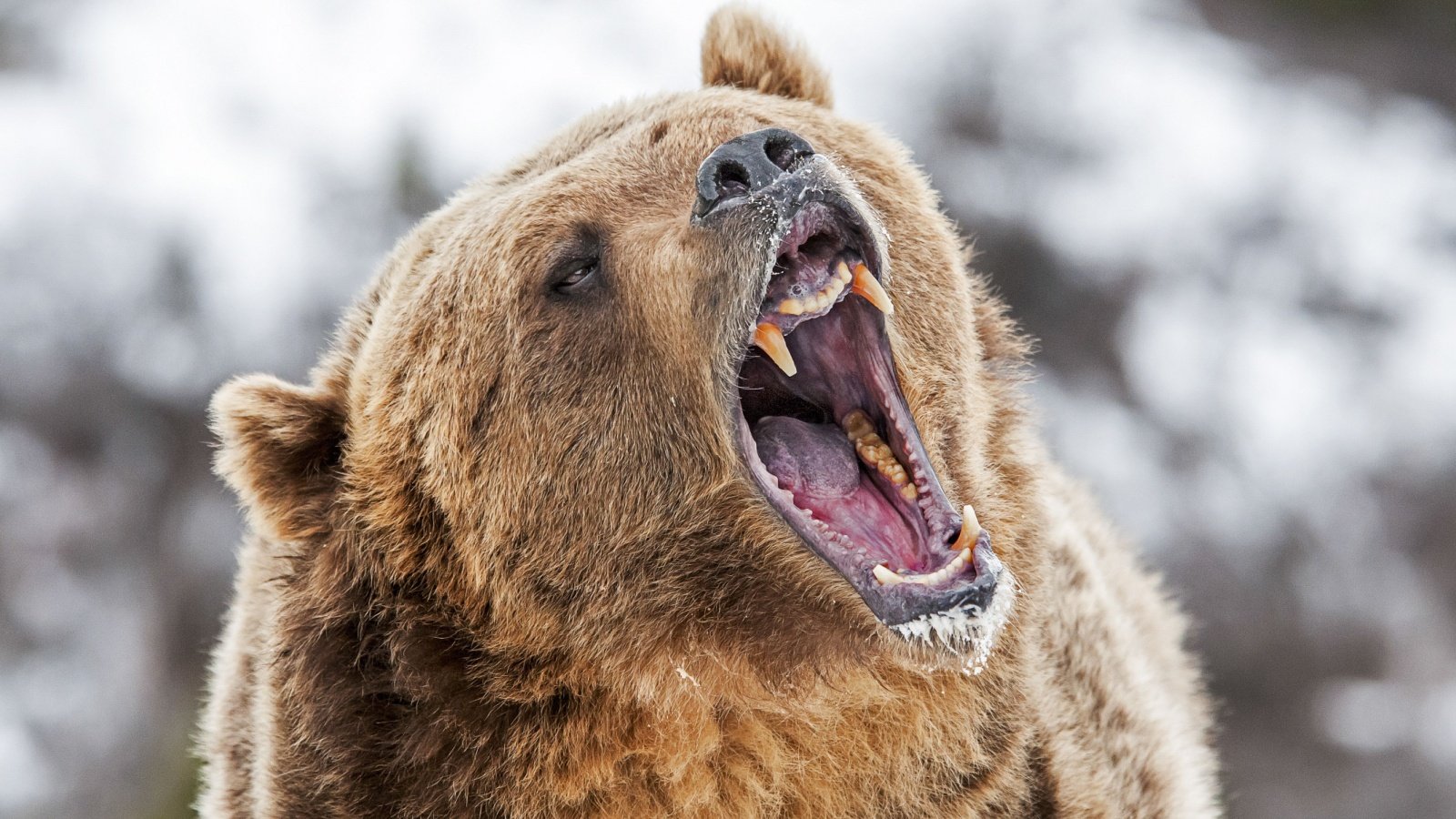Some of the planet’s largest animals call North America home.
The continent’s extreme weather and dramatic seasonal changes pose a challenge to some species but can also work to the advantage of others. The sheer size of these giants often plays a crucial role in their survival, influencing their diets, reproductive strategies, and predator-prey dynamics.
Let’s explore the largest creatures that inhabit the vast wildernesses of North America and its surrounding waters.
Muskox
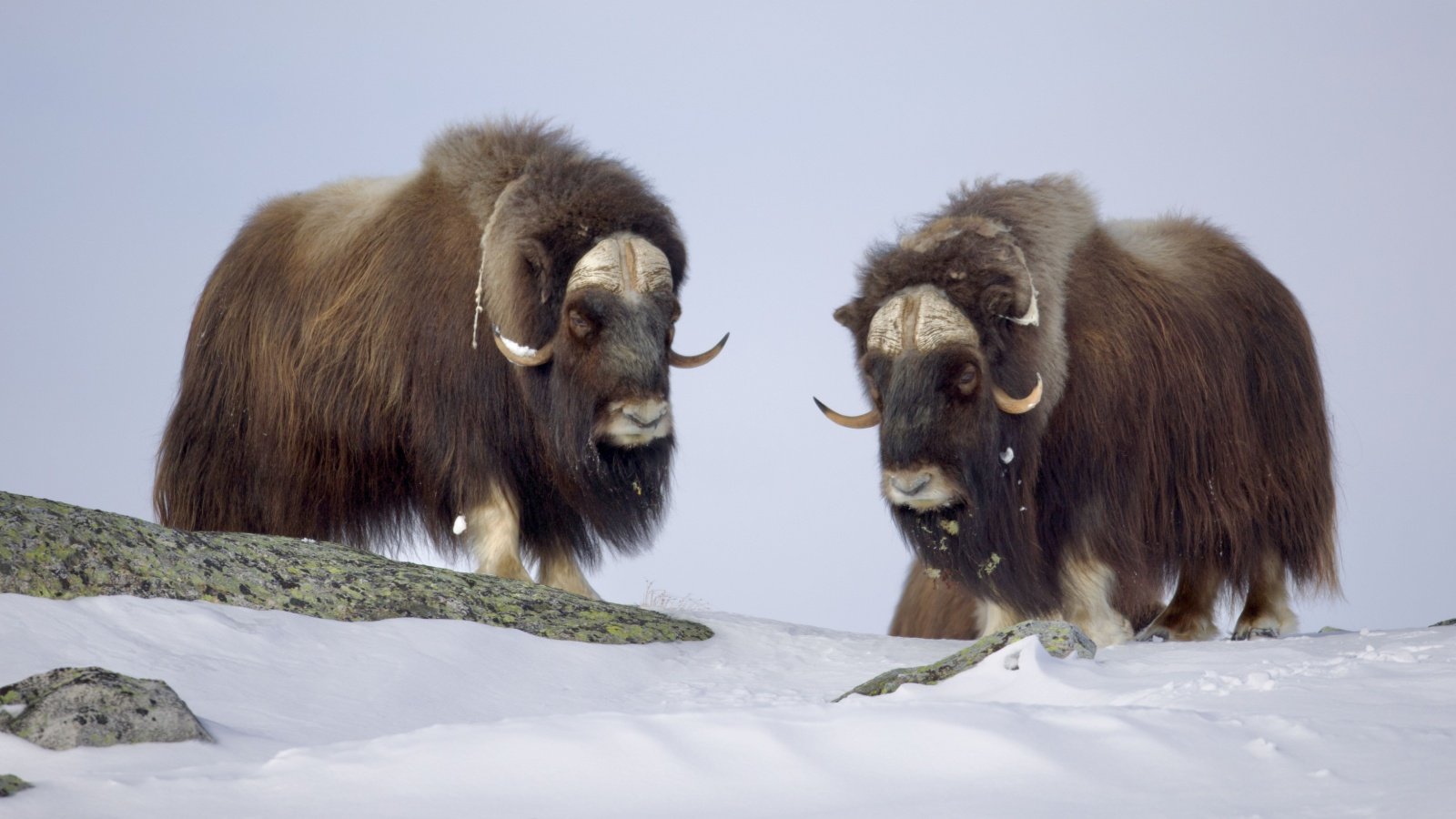
Muskoxen, with their thick coats and strong builds, are built to survive the Arctic tundra of North America. Males can weigh up to 800 pounds and are known for their powerful front shoulders and bossed horns.
American Bison
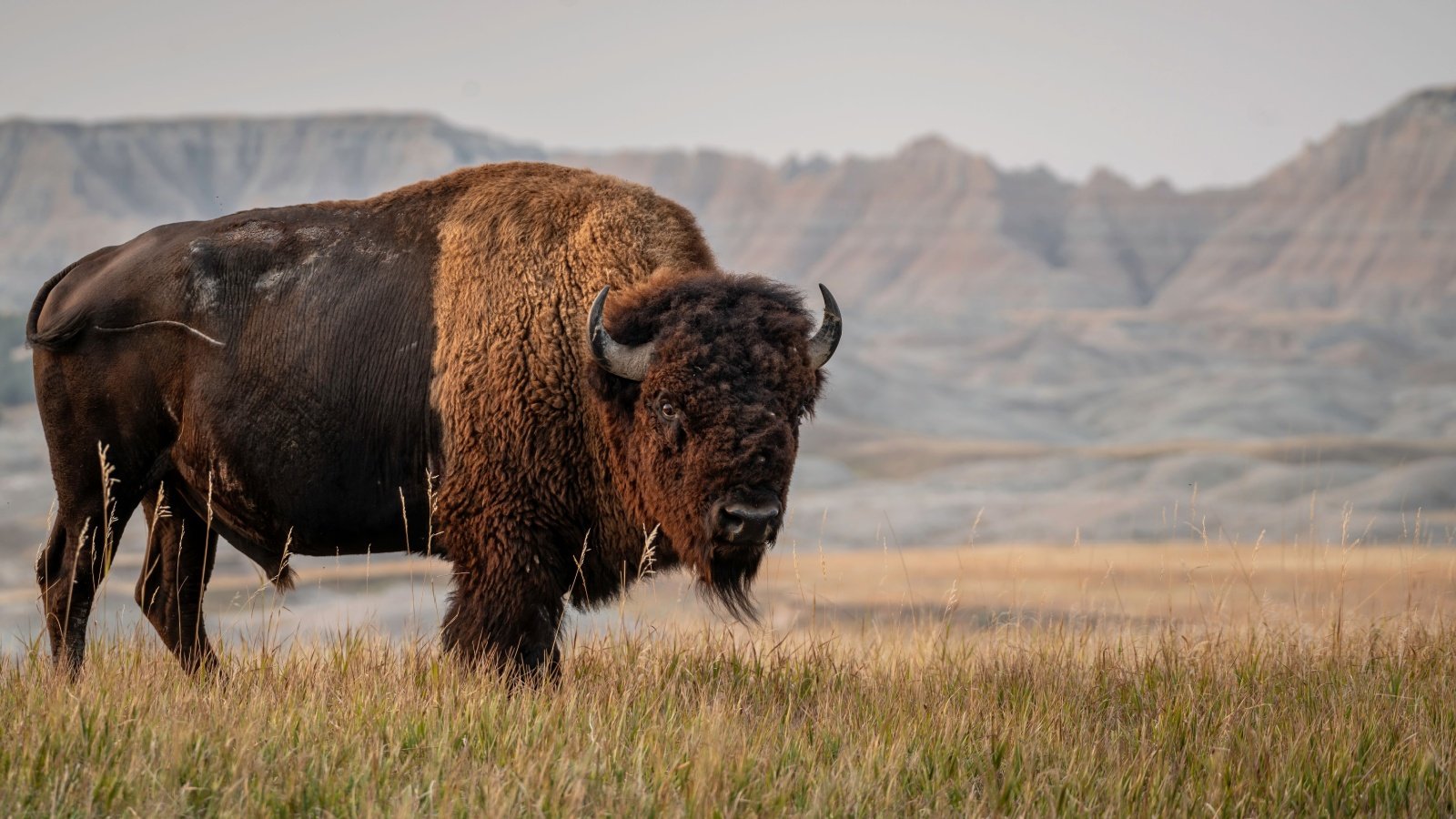
The American bison, once roaming the grasslands in massive herds, is the largest land animal native to North America. Adult males can weigh up to 2,000 pounds and stand six feet tall at the shoulder. Revered by Native American cultures and pivotal to the prairie ecosystem, their numbers have rebounded from near extinction thanks to conservation efforts.
Grizzly Bear
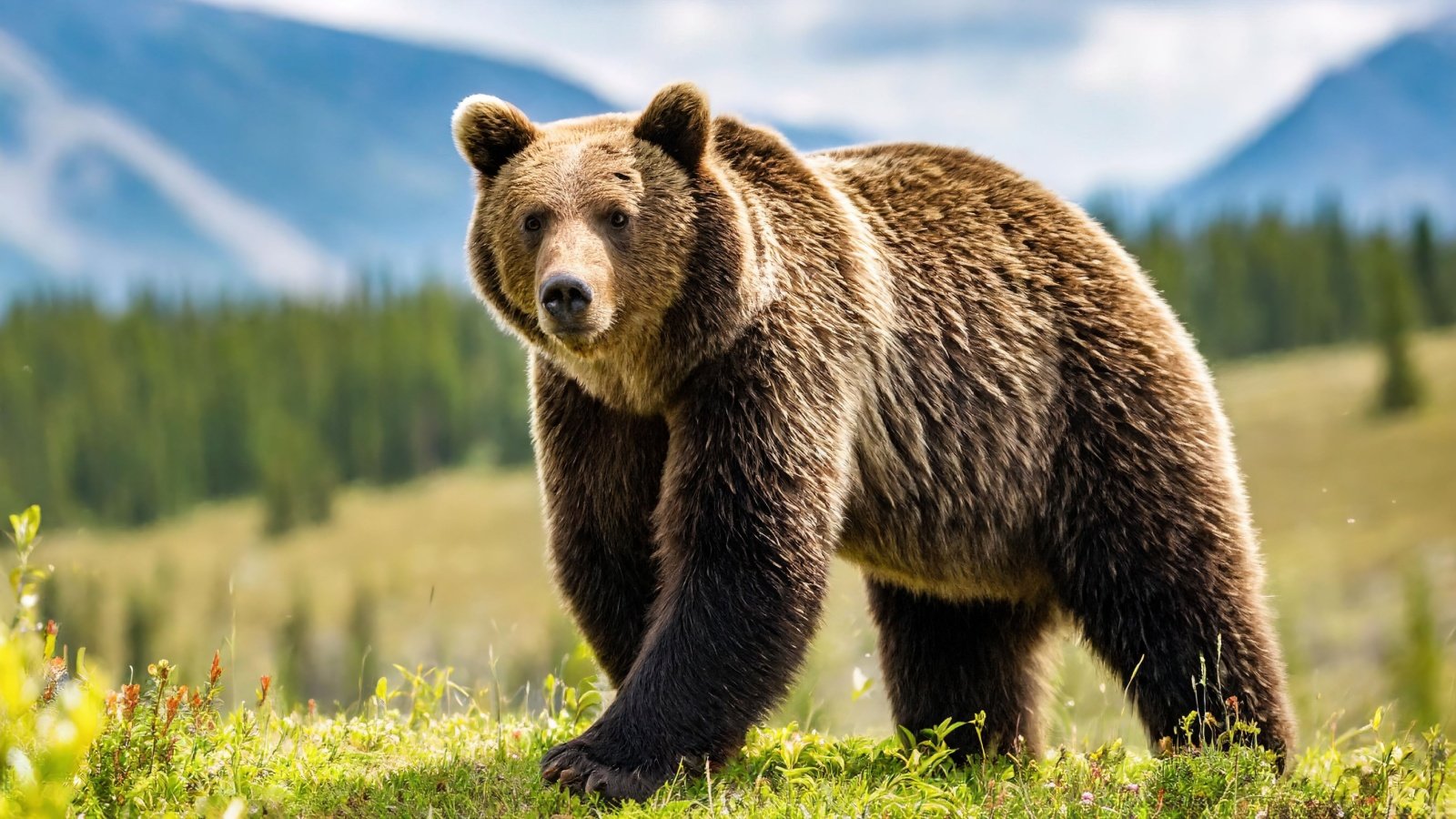
Grizzly bears are formidable predators known for their size and strength. They can weigh up to 790 pounds and reach a height of about 3.5 feet at the shoulder when on all fours. These bears roam from the forests of Alaska down through the western Canadian provinces and into the United States, where they are often at the top of the food chain.
Moose
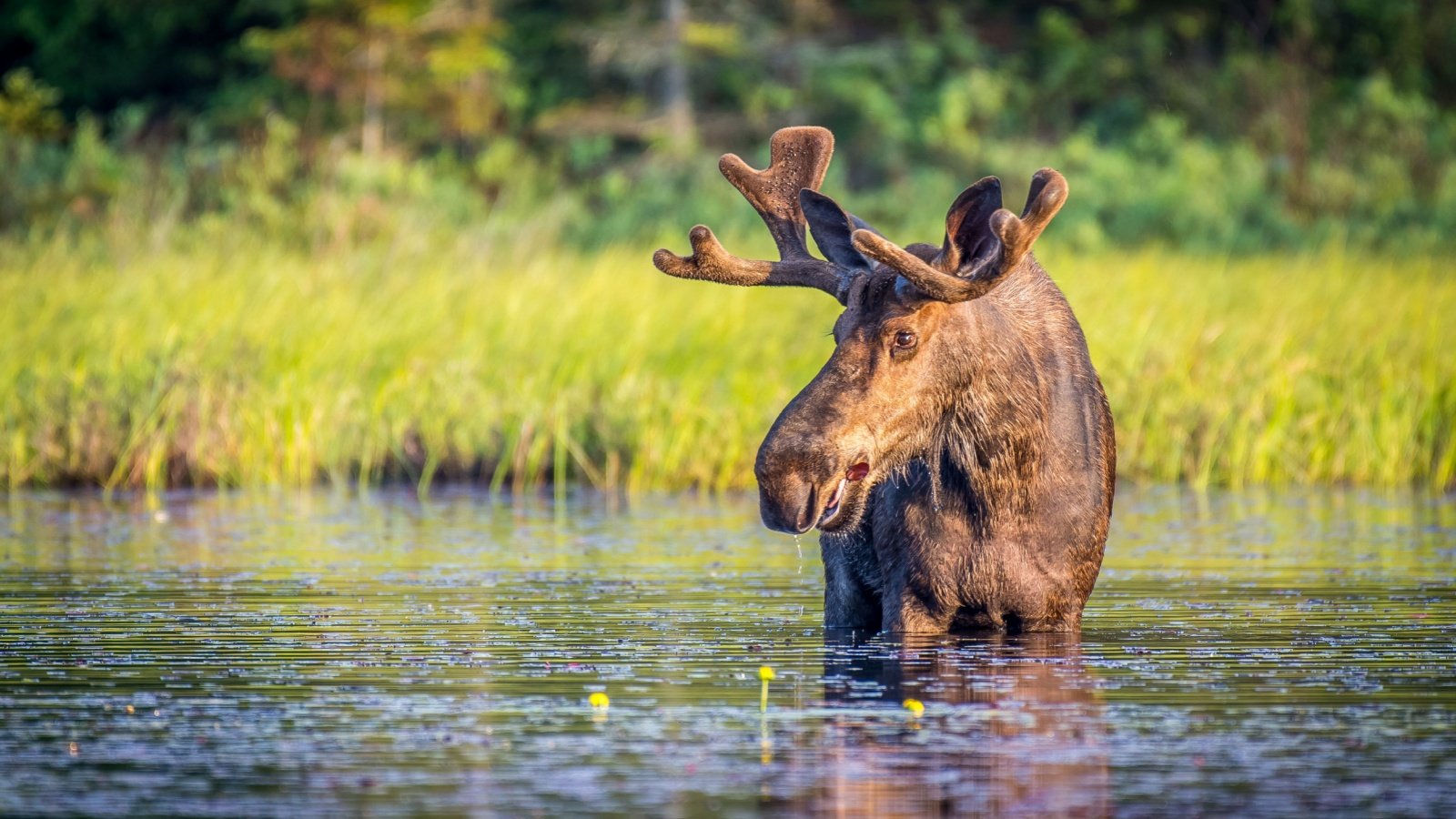
Moose are the largest species in the deer family, with males (bulls) standing over six feet tall at the shoulder and weighing up to 1,500 pounds. Their massive antlers can span six feet across. Found in Canadian and Northern American forests, moose are adapted to cold climates with their thick, insulating fur and ability to traverse deep snow.
Walrus
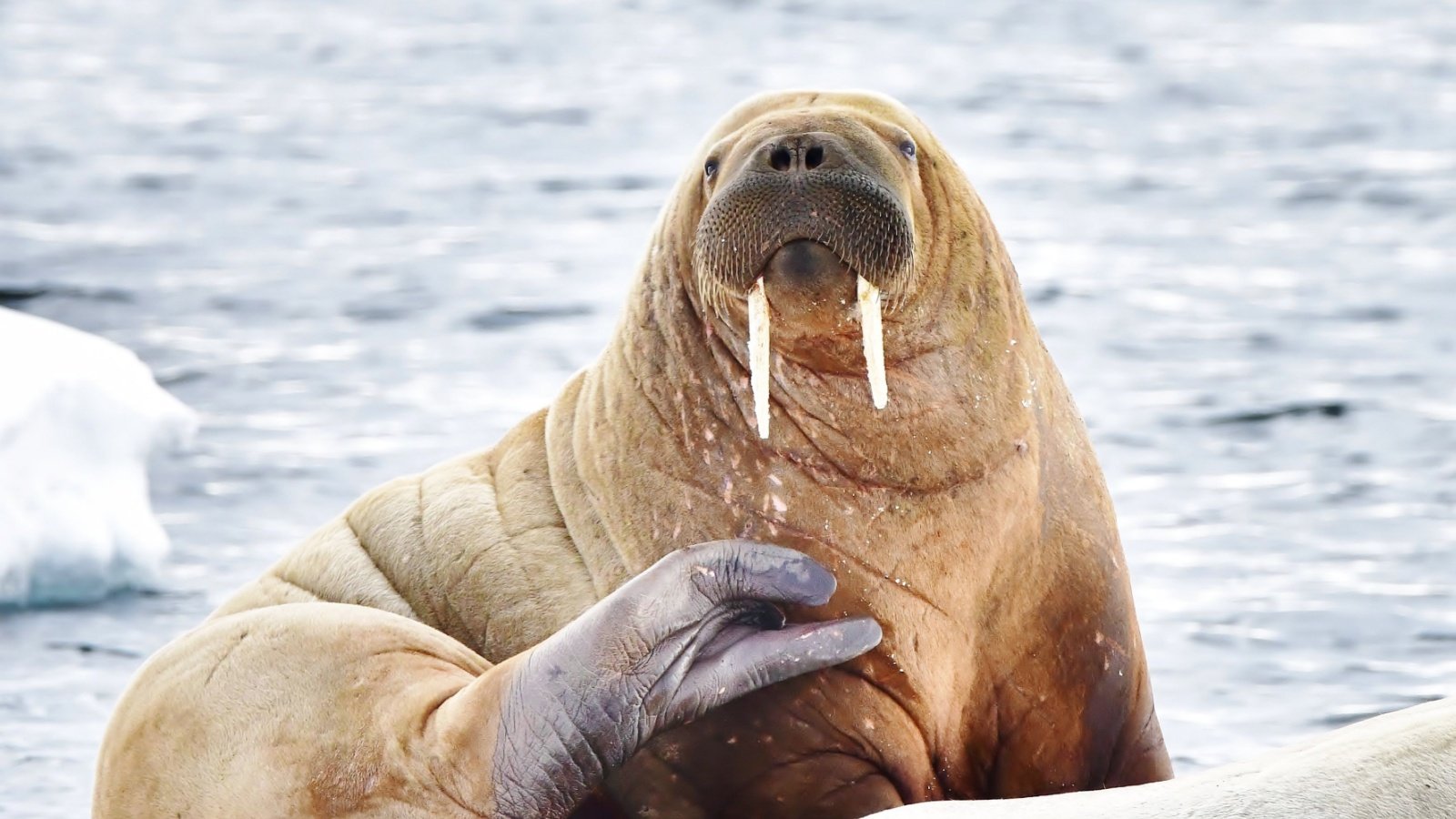
Walruses are easily recognizable by their prominent tusks, whiskers, and massive bulk, with males weighing up to 4,400 pounds. They inhabit the icy waters of the Arctic around Alaska and occasionally are seen as far south as the northern tip of Newfoundland.
Orca
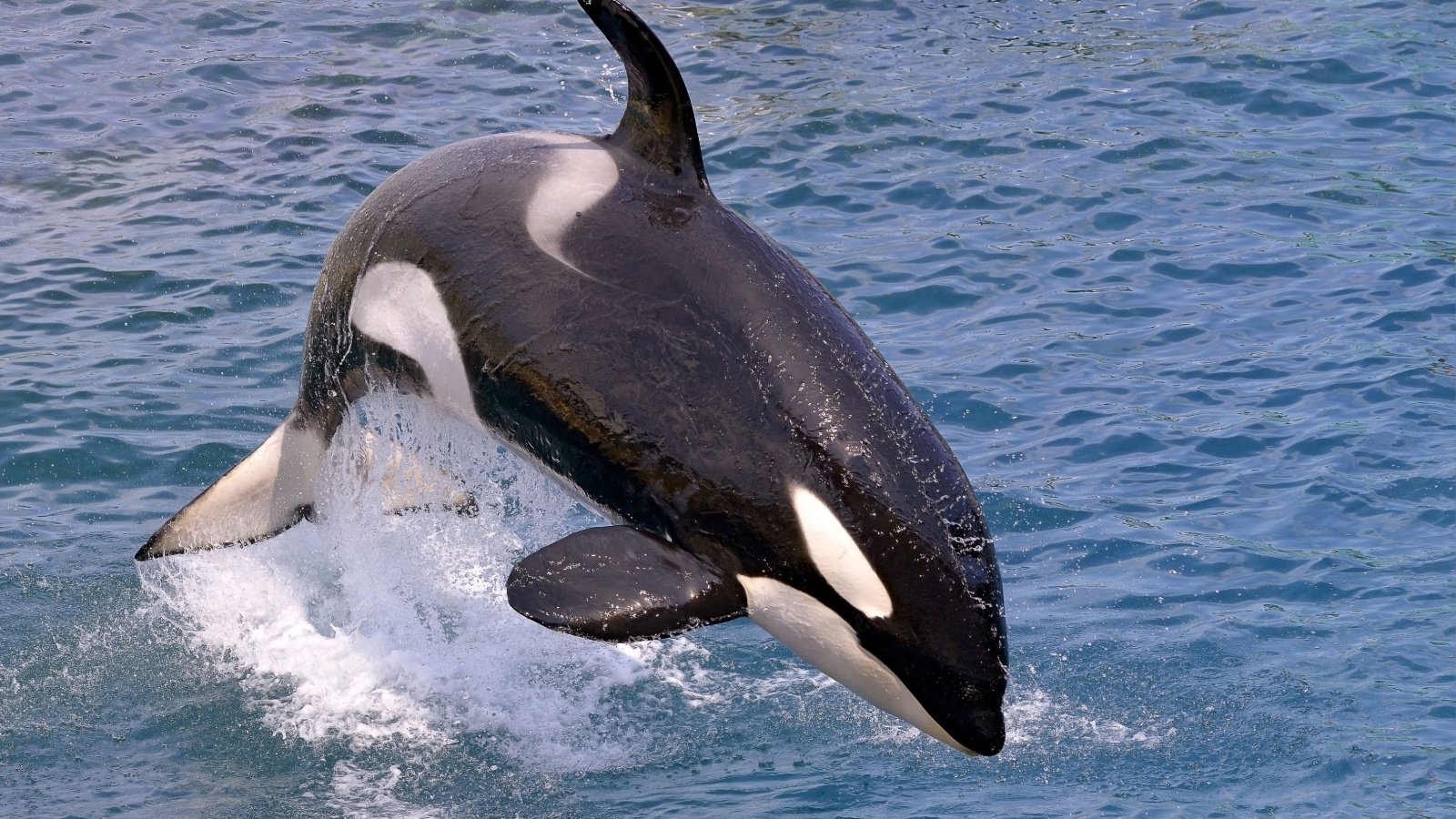
Orcas, or killer whales, are the largest members of the dolphin family and are powerful apex predators. They can grow up to 32 feet in length and weigh up to six tons. Orcas are highly social and are commonly found along the Pacific coast, from Alaska to California.
Great White Shark
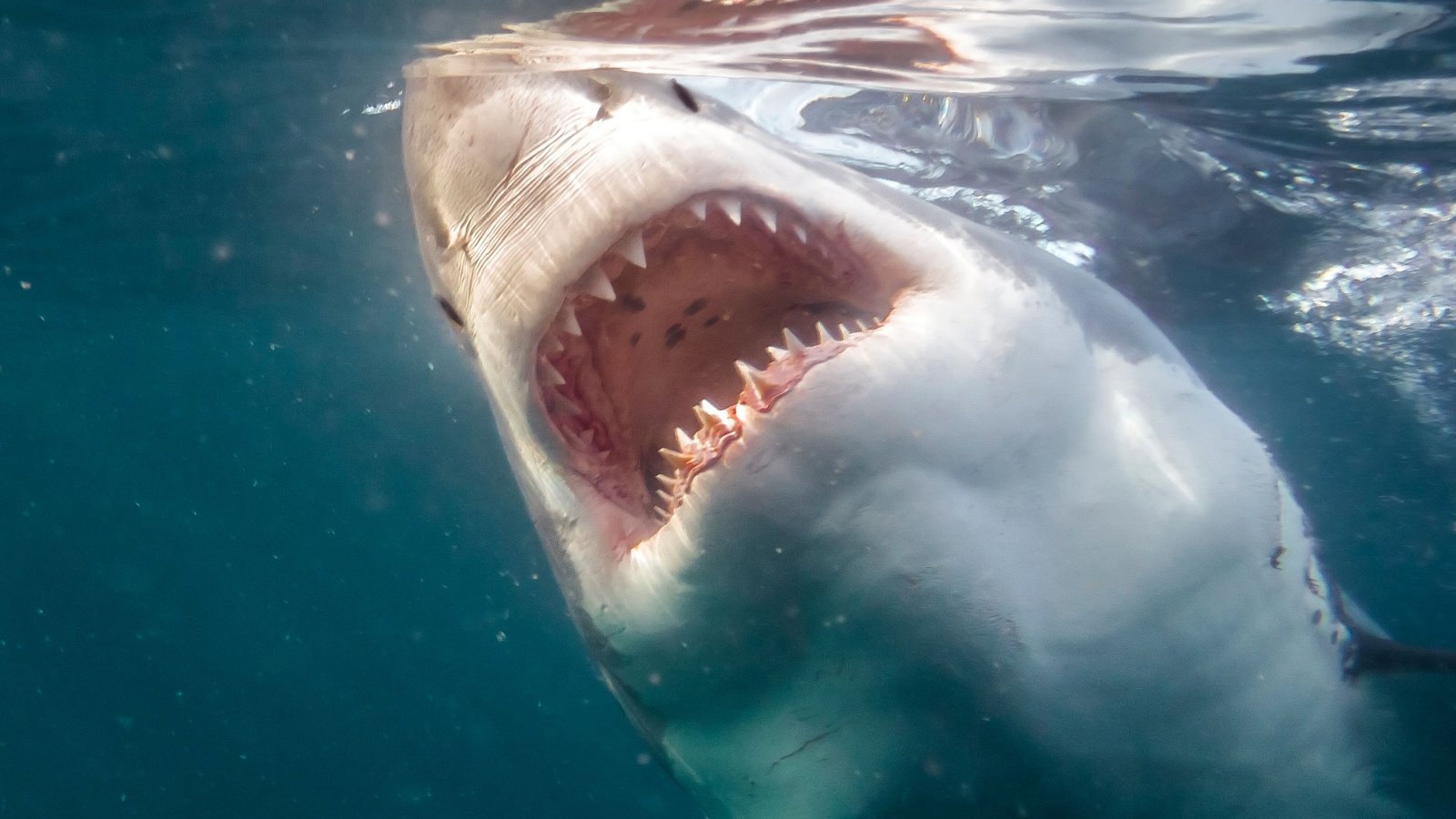
The great white shark frequents the coastal waters of North America, particularly in the Northeast and off California. Adults can grow to be over 20 feet long and weigh up to 5,000 pounds. These sharks are apex predators, playing a critical role in maintaining the health of marine ecosystems.
American Alligator
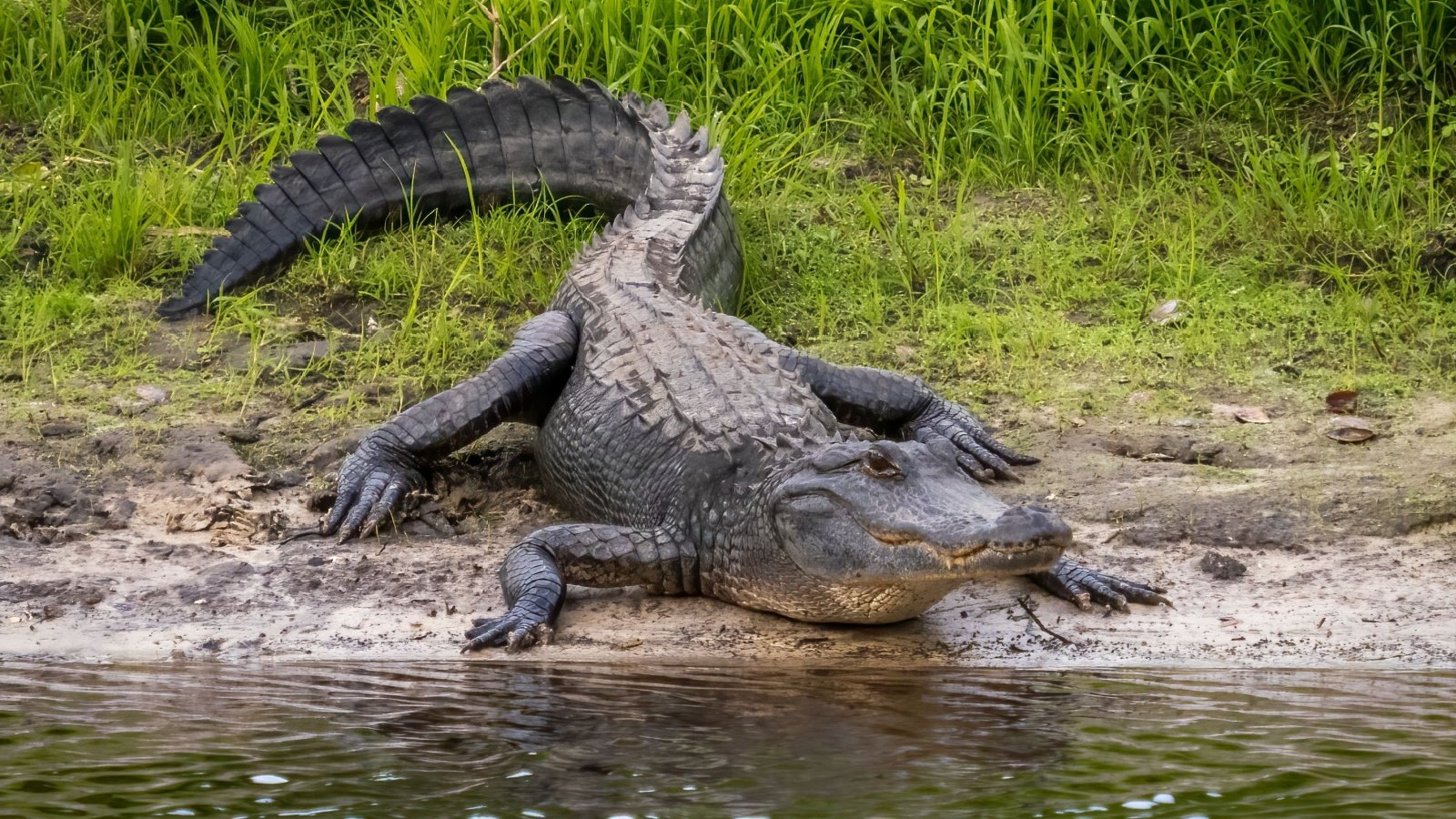
American alligators are found in the southeastern USA, particularly in the Florida Everglades and the Louisiana Bayou. They can grow up to 15 feet long and weigh as much as 1,000 pounds. Alligators are crucial for maintaining the ecological balance in wetland habitats.
California Condor
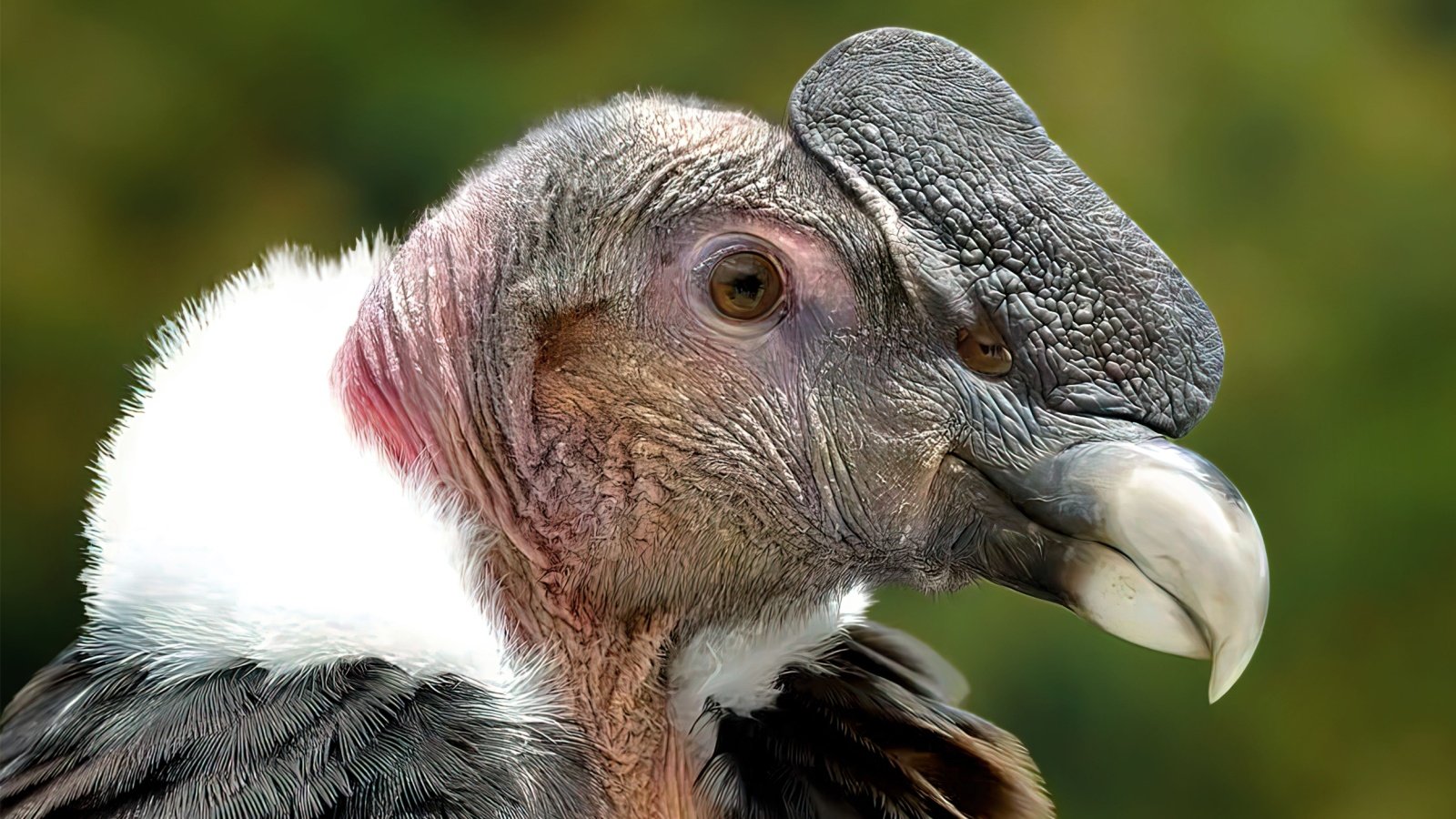
The California condor is one of North America’s largest birds, with a wingspan reaching up to 9.8 feet. As scavengers, they play an important role in their ecosystems by consuming carrion. Though they were once near extinction, intensive conservation efforts have helped their numbers slowly recover.
Bald Eagle
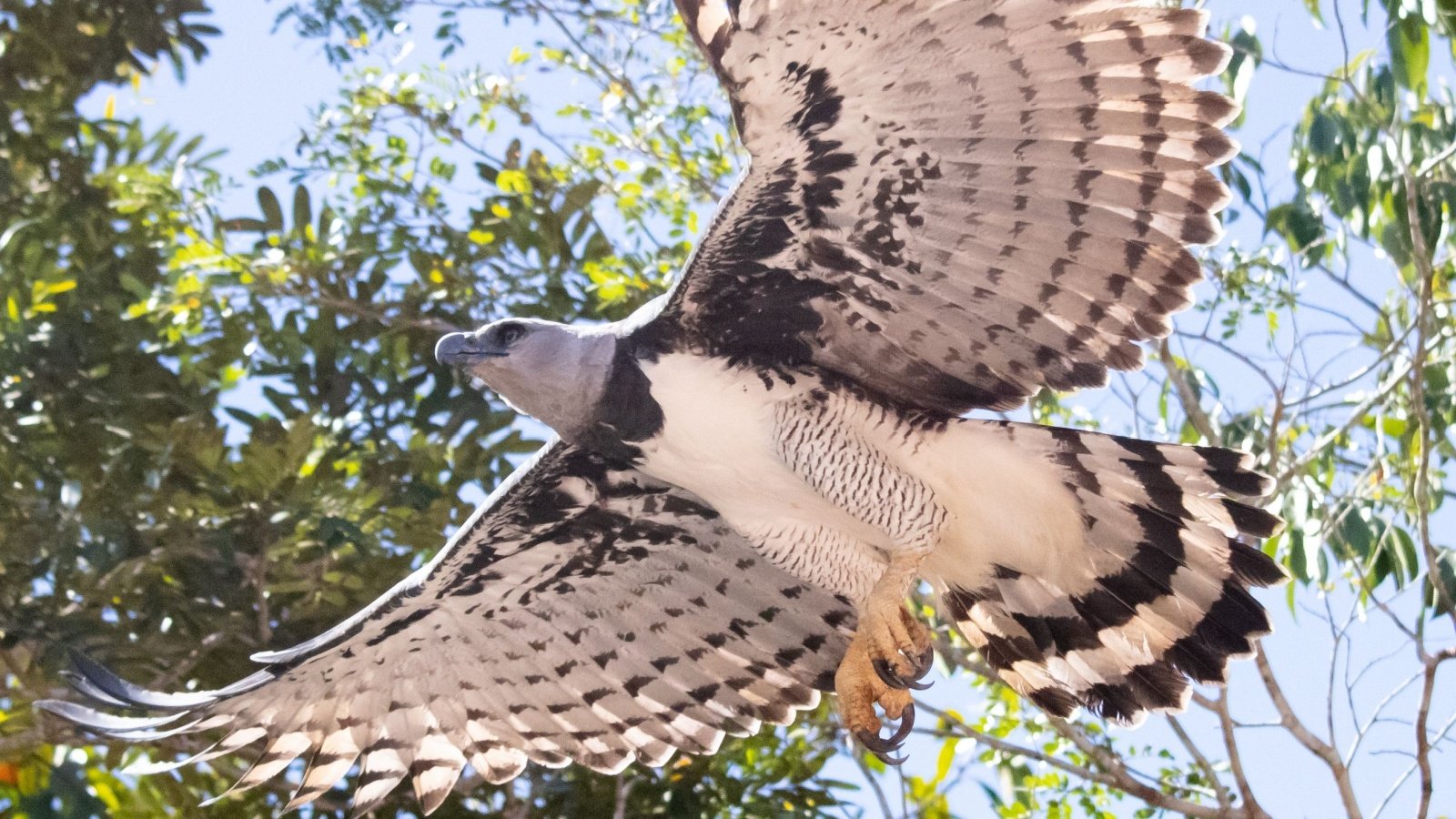
The bald eagle boasts a wingspan of up to 7.5 feet. Known for its majestic appearance and powerful build, the bald eagle primarily feeds on fish snatched from the water with its sharp talons. These birds can be found near lakes, rivers, and coastal water bodies across North America.
Steller Sea Lion
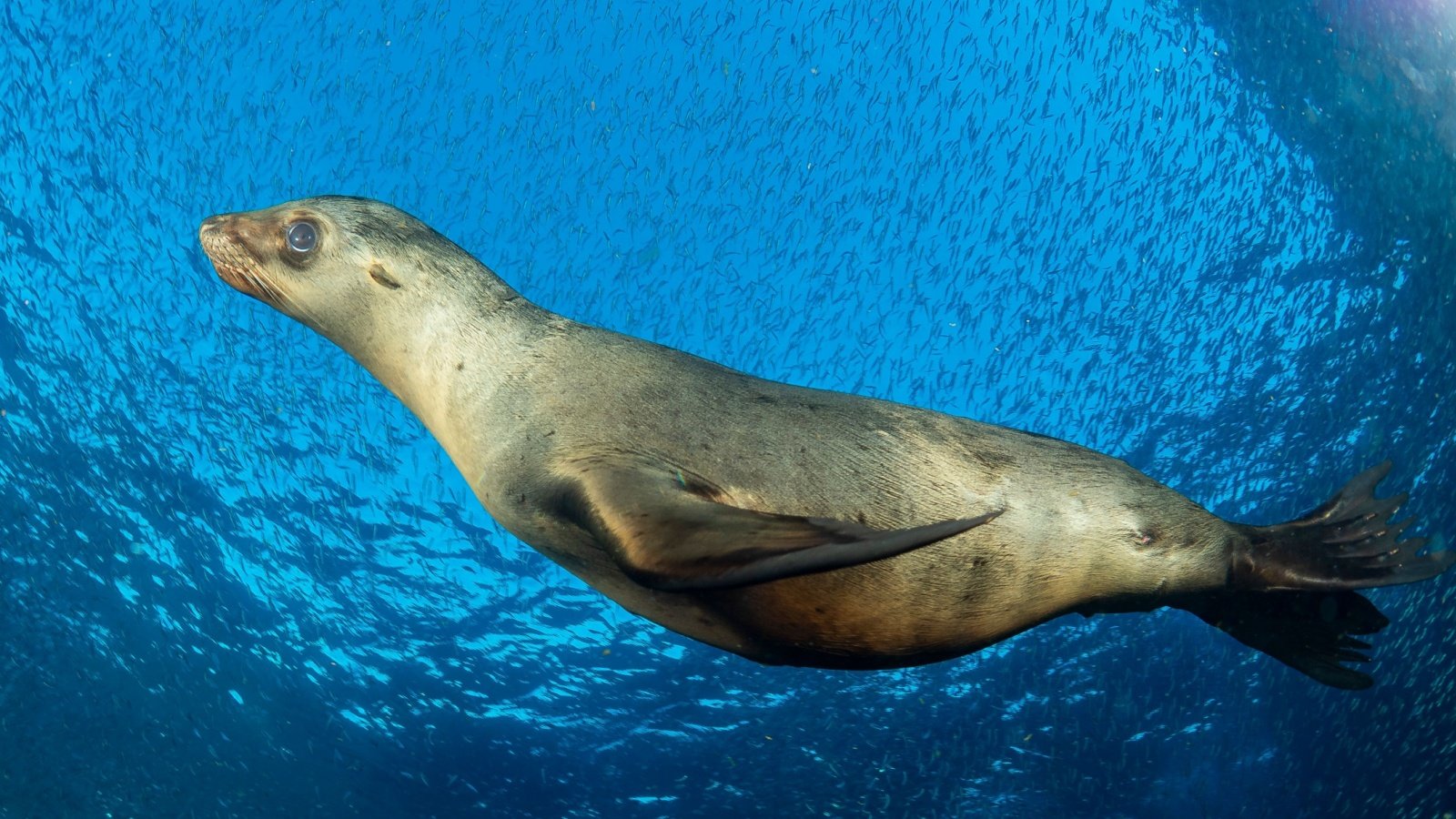
The Steller sea lion, the largest of the eared seals, inhabits the northern Pacific coasts. Males can weigh up to 2,500 pounds and are distinguished by their massive size and thick necks. They are vital to the marine ecosystem, impacting fish populations and providing a food source for larger predators.
Leatherback Sea Turtle
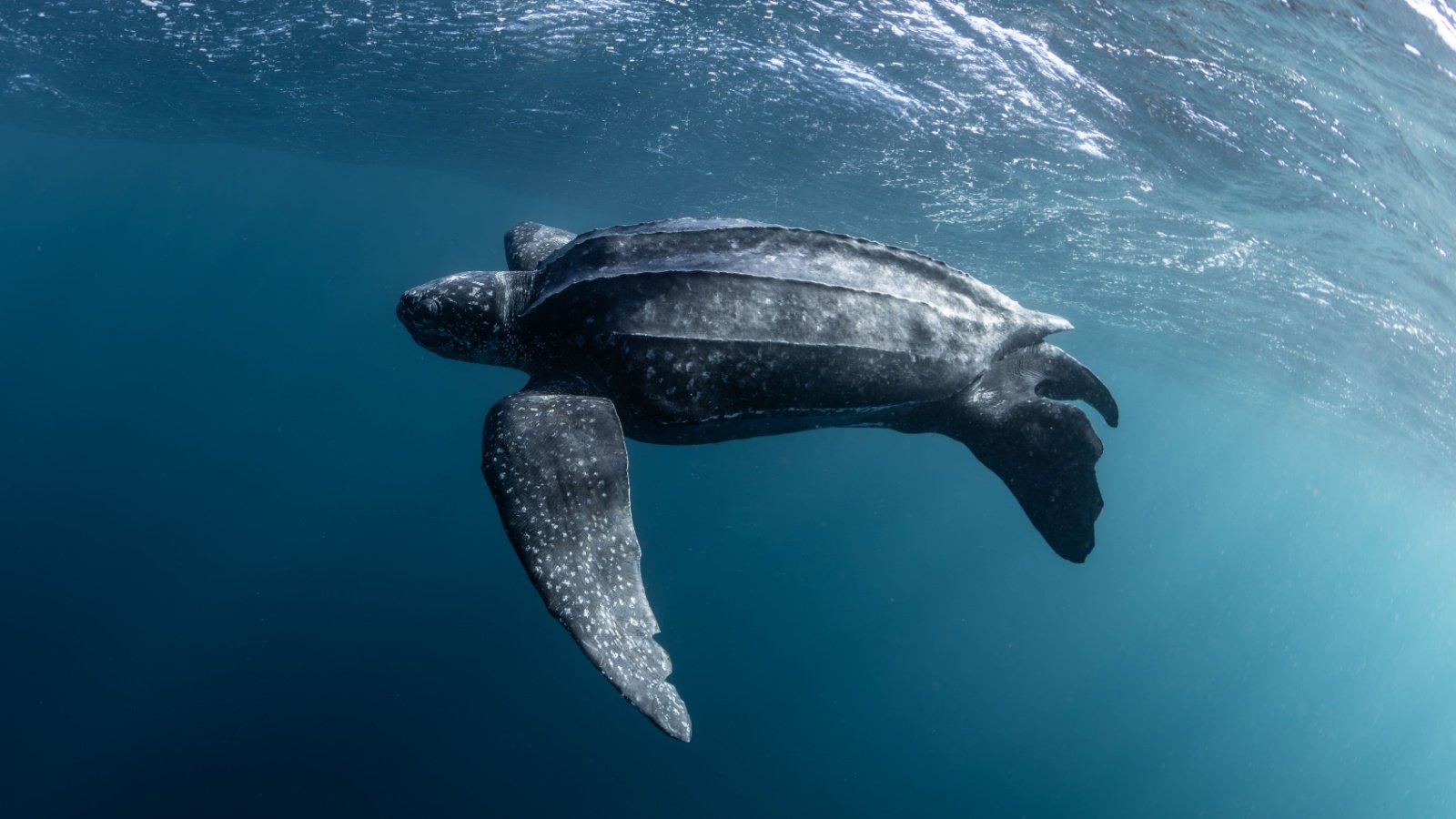
The leatherback sea turtle are often spotted on the Atlantic coast of North America. They can grow up to 7 feet in length and weigh over 2,000 pounds. These ancient mariners are known for their long migrations from breeding to feeding grounds, one of the longest in the animal kingdom.
American Crocodile
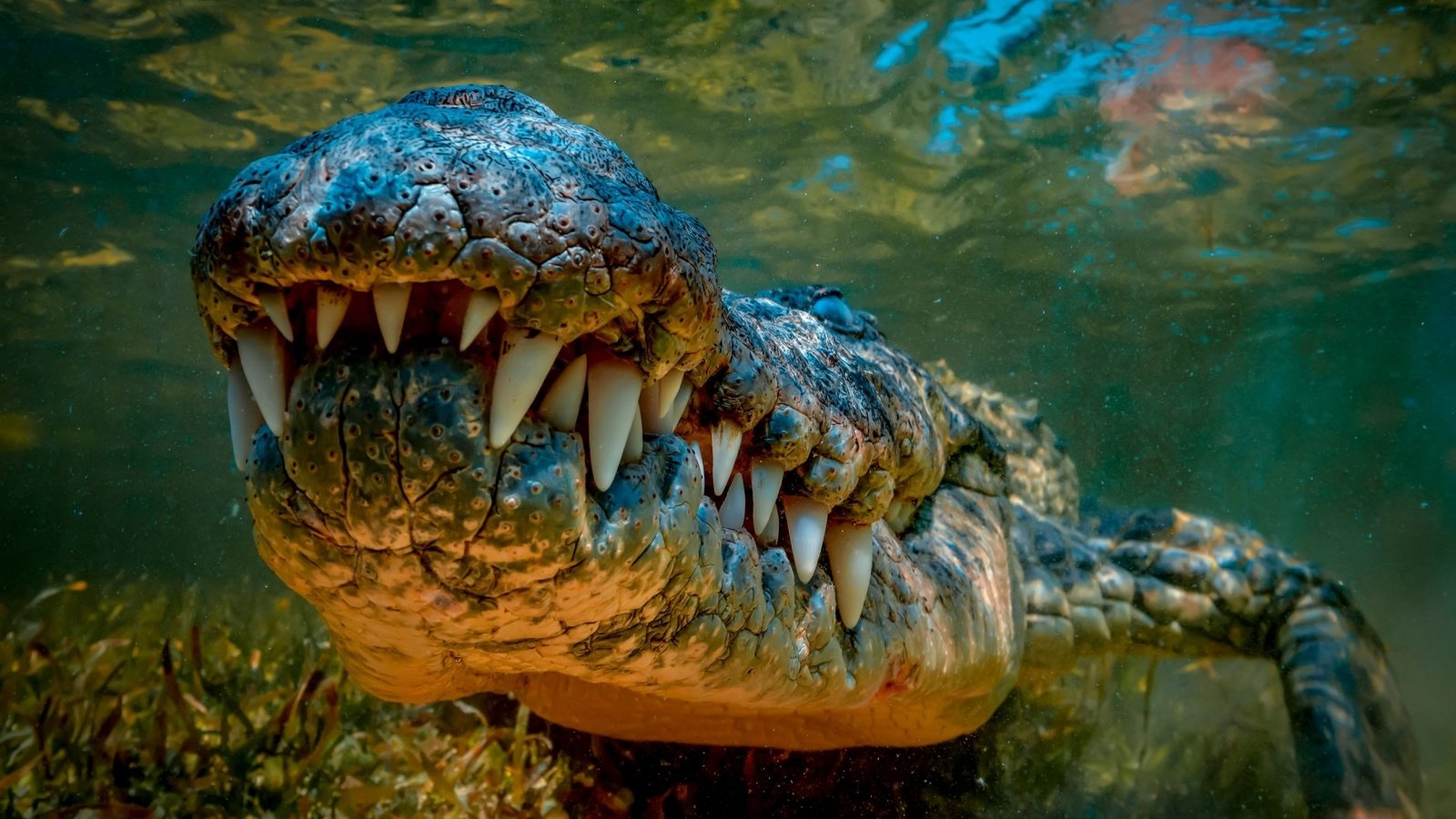
American crocodiles, residing primarily in the coastal regions of south Florida, can grow up to 15 feet long. These reptiles are more reclusive than their alligator relatives and prefer brackish or saltwater habitats.
Manta Ray
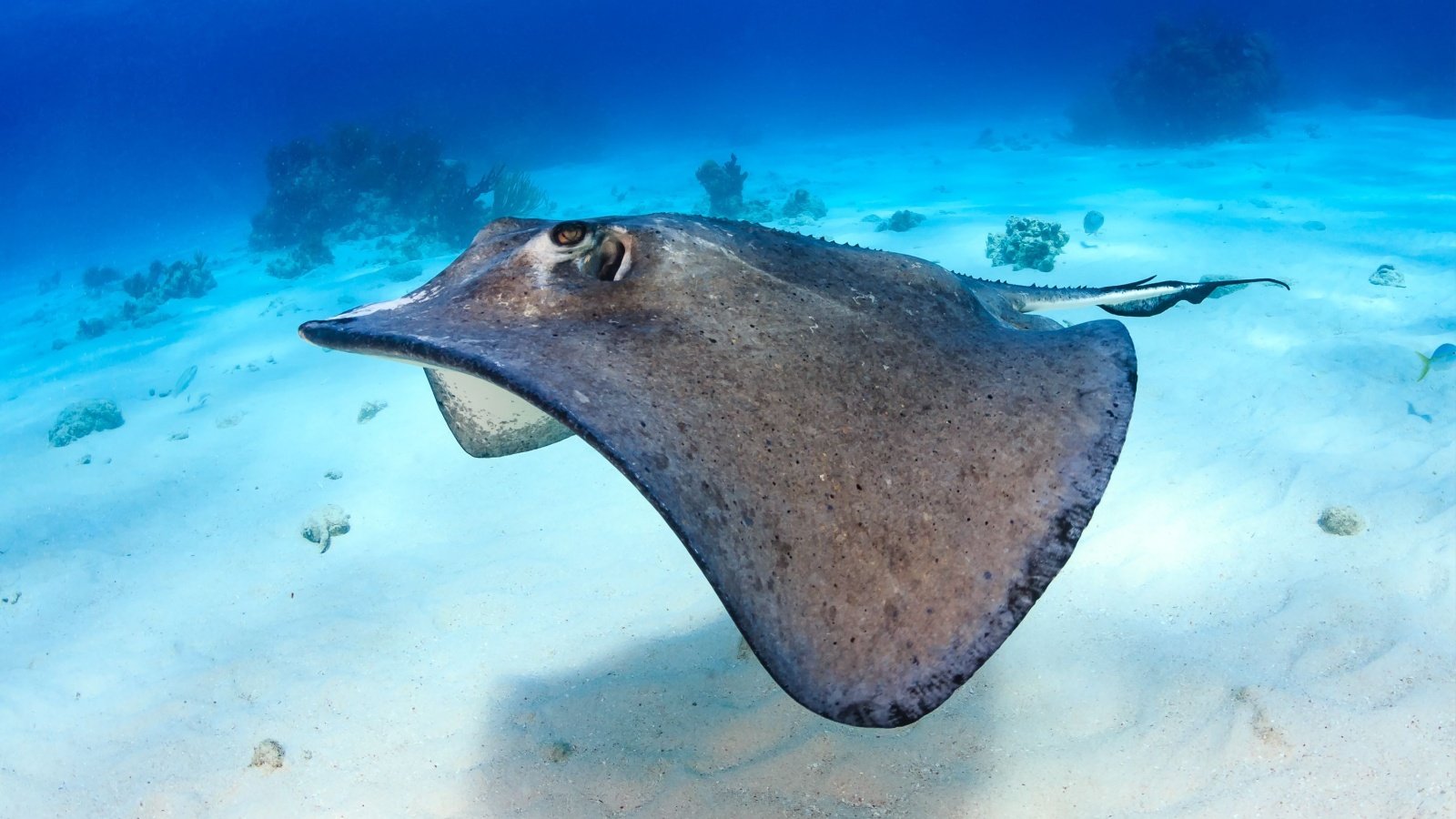
Manta rays, with wingspans that can exceed 23 feet, are among the largest fish in the oceans around North America. These graceful swimmers are filter feeders, consuming vast quantities of plankton.
Manatee
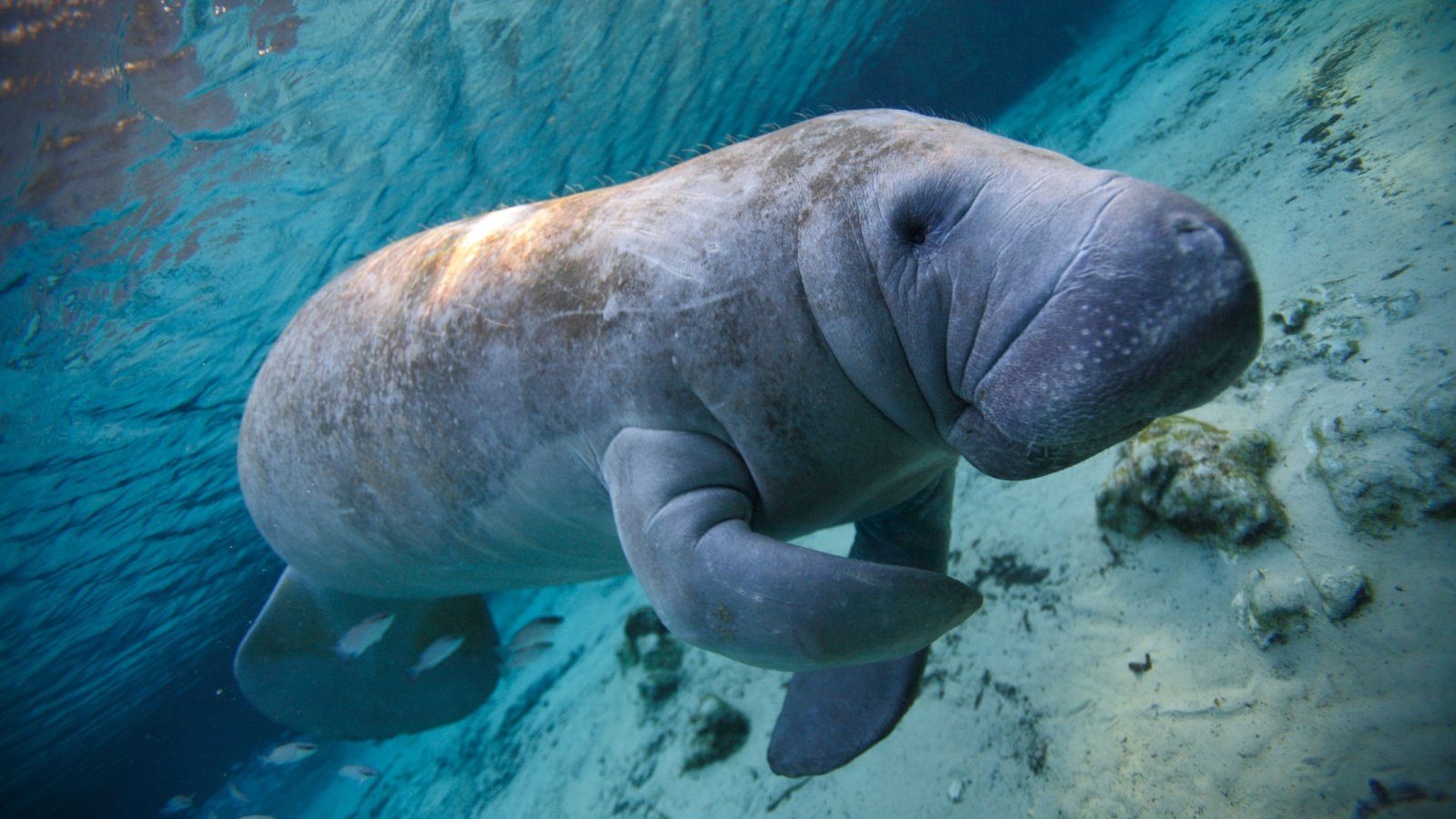
Often called sea cows, manatees are gentle giants found in the warm waters of Florida. They can grow up to 13 feet long and weigh over 1,300 pounds. These slow-moving herbivores are at risk from boat strikes and habitat loss, making conservation efforts essential.
Elk

Elk are one of the largest species within the deer family, second only to moose in North America. Adult males can weigh as much as 730 pounds and carry impressive antlers that they shed and regrow each year. These animals are social, often found in herds, and are a favorite among wildlife watchers in the Rocky Mountains and Pacific Northwest.
Polar Bear
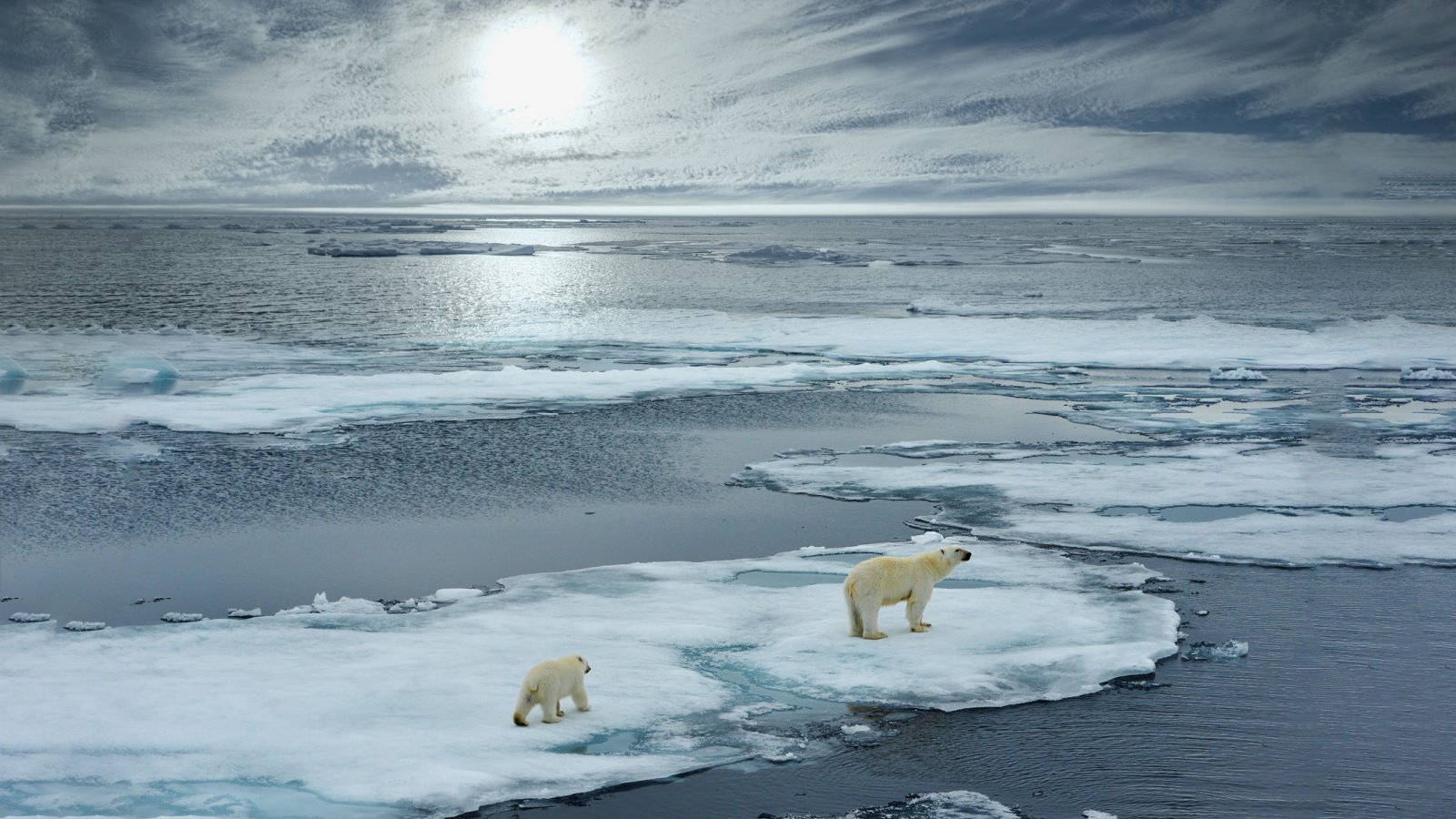
Polar bears, the largest land carnivores in North America, roam the Arctic ice sheets and swim in coastal waters. They can weigh over 1,500 pounds and stand up to 10 feet tall when on their hind legs. Adapted to life in a frigid environment, their white fur provides camouflage, and their body fat insulates against the cold.
Humpback Whale
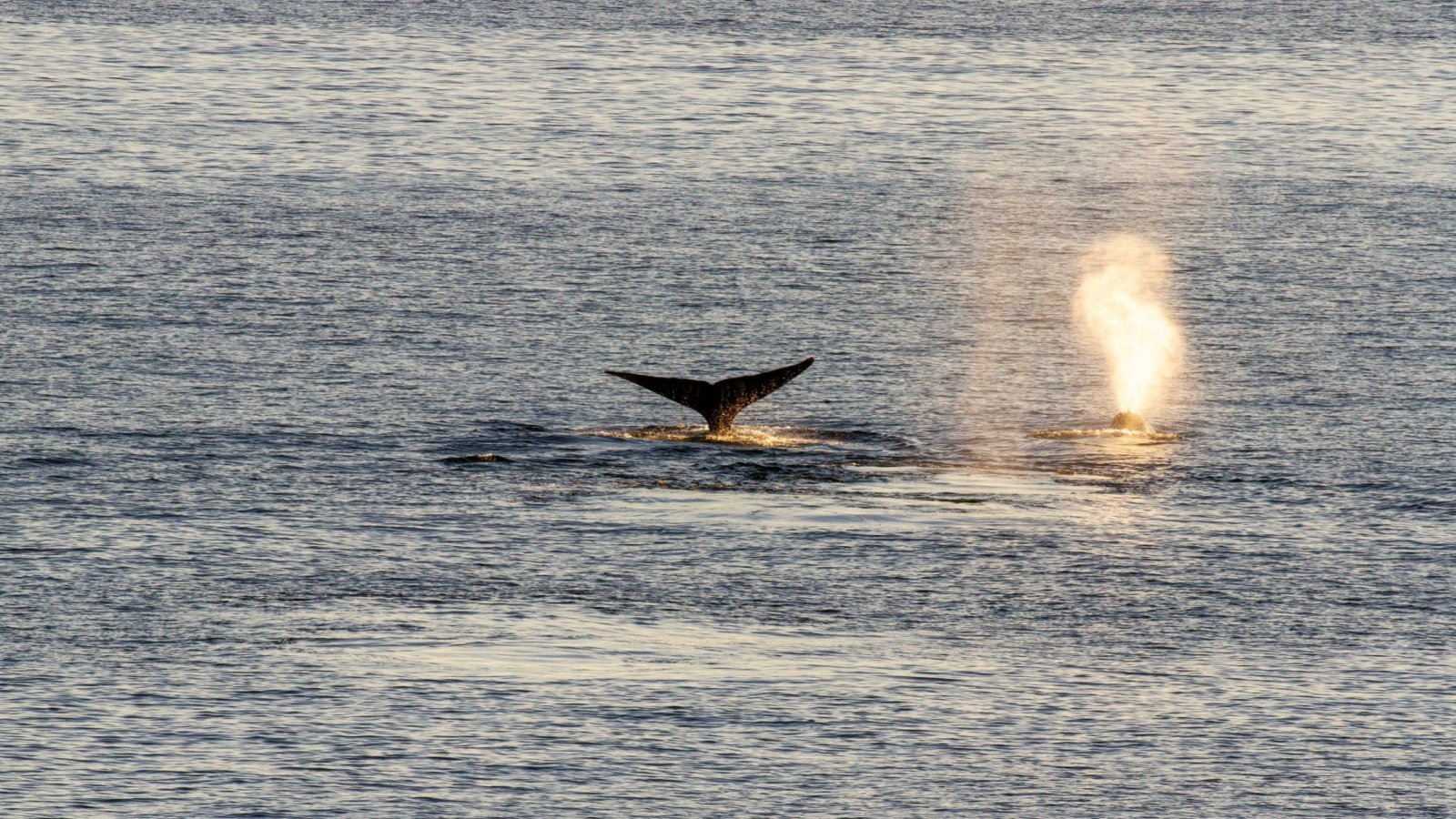
The humpback whale frequents North America’s east and west coasts during migration. These marine mammals can grow up to 60 feet long and weigh about 40 tons. They are a success story of marine conservation, with populations increasing since the whaling ban.
Blue Whale
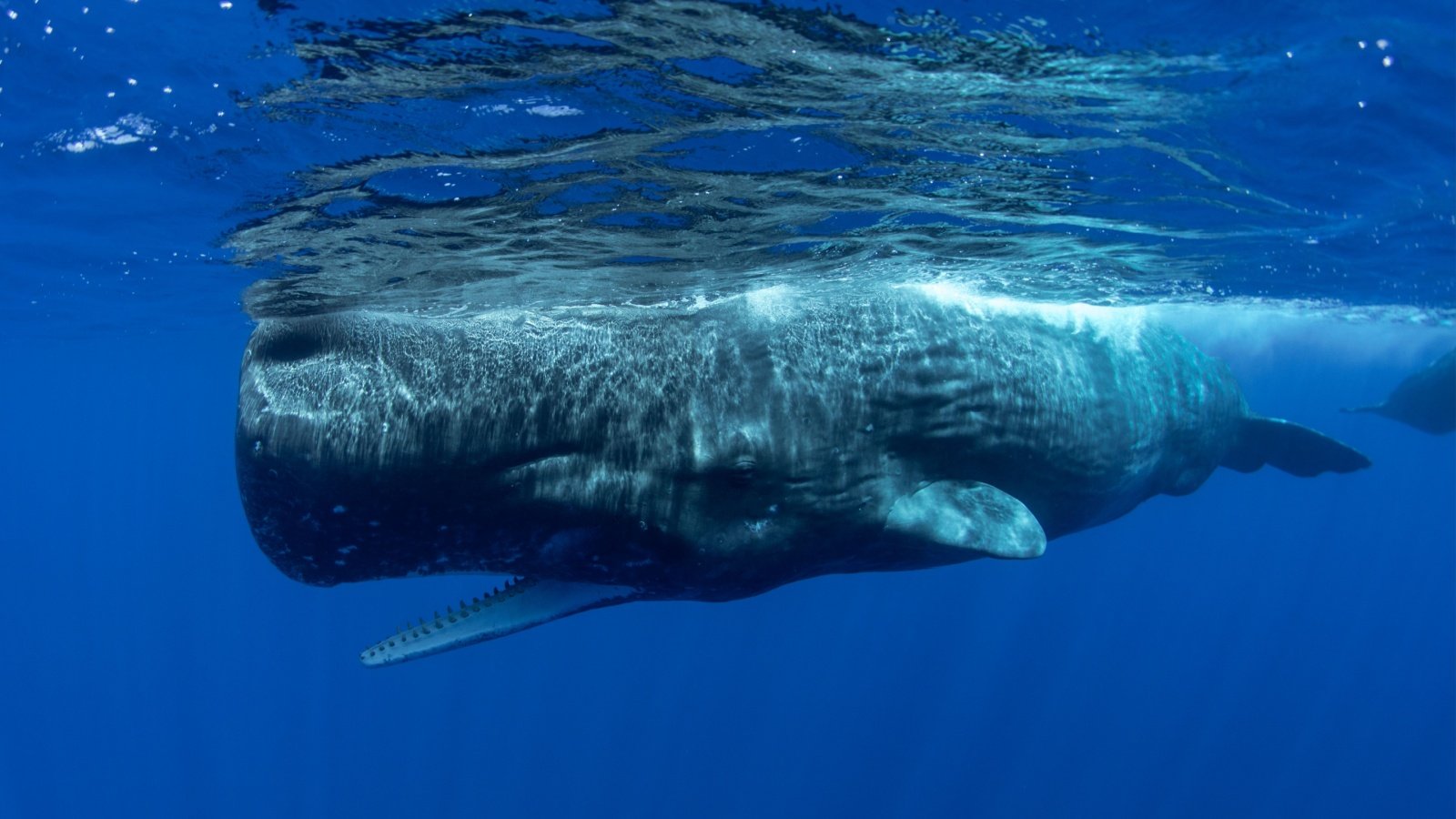
The blue whale, the largest animal ever known to have lived on Earth, frequents the ocean off the west coast of North America. They can reach lengths of up to 100 feet and weigh as much as 200 tons. These gentle giants feed primarily on tiny krill and play a crucial role in the marine food chain.
Cougar
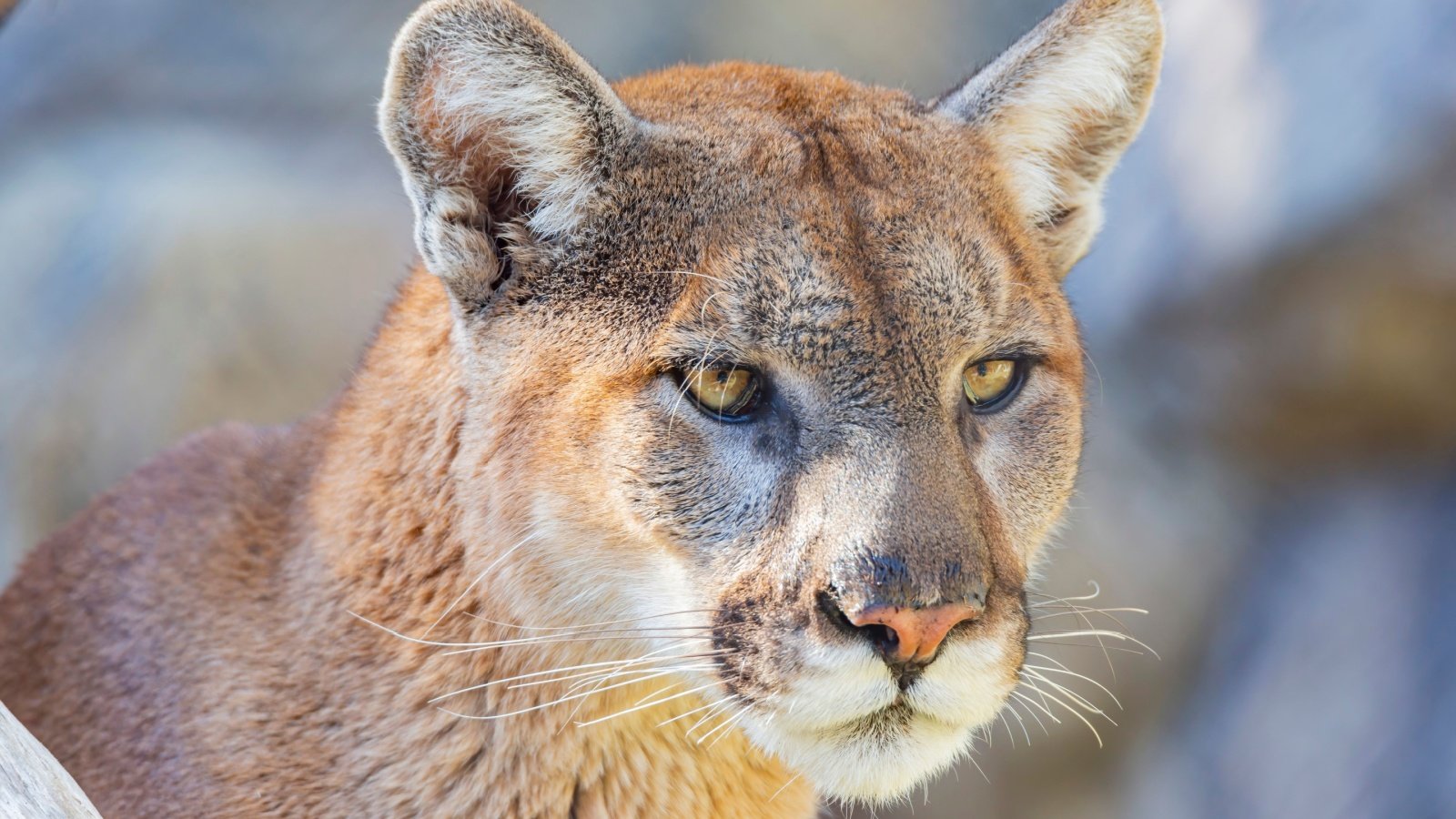
Also known as mountain lions, cougars are one of the largest predators in North America. They can weigh up to 220 pounds and measure more than 8 feet from nose to tail. Cougars are highly adaptable and found in various habitats across the continent, from forests and mountainous areas to swamps.



